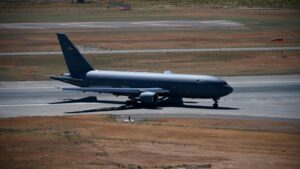
DAYTON, Ohio--The U.S. Air Force is working to resolve six Category 1 deficiencies on the Boeing [BA] KC-46A tanker, including Auxiliary Power Unit (APU) drain mast cracking that resurfaced as a critical problem. "We're down to six Cat 1 DRs [deficiency reports]," Air Force Col. William Ottati, the system program manager for the KC-46A, told reporters on July 31 during a briefing at the Air Force Life Cycle Management Center's (AFLCMC) annual industry days conference here. "We downgraded the flight…














